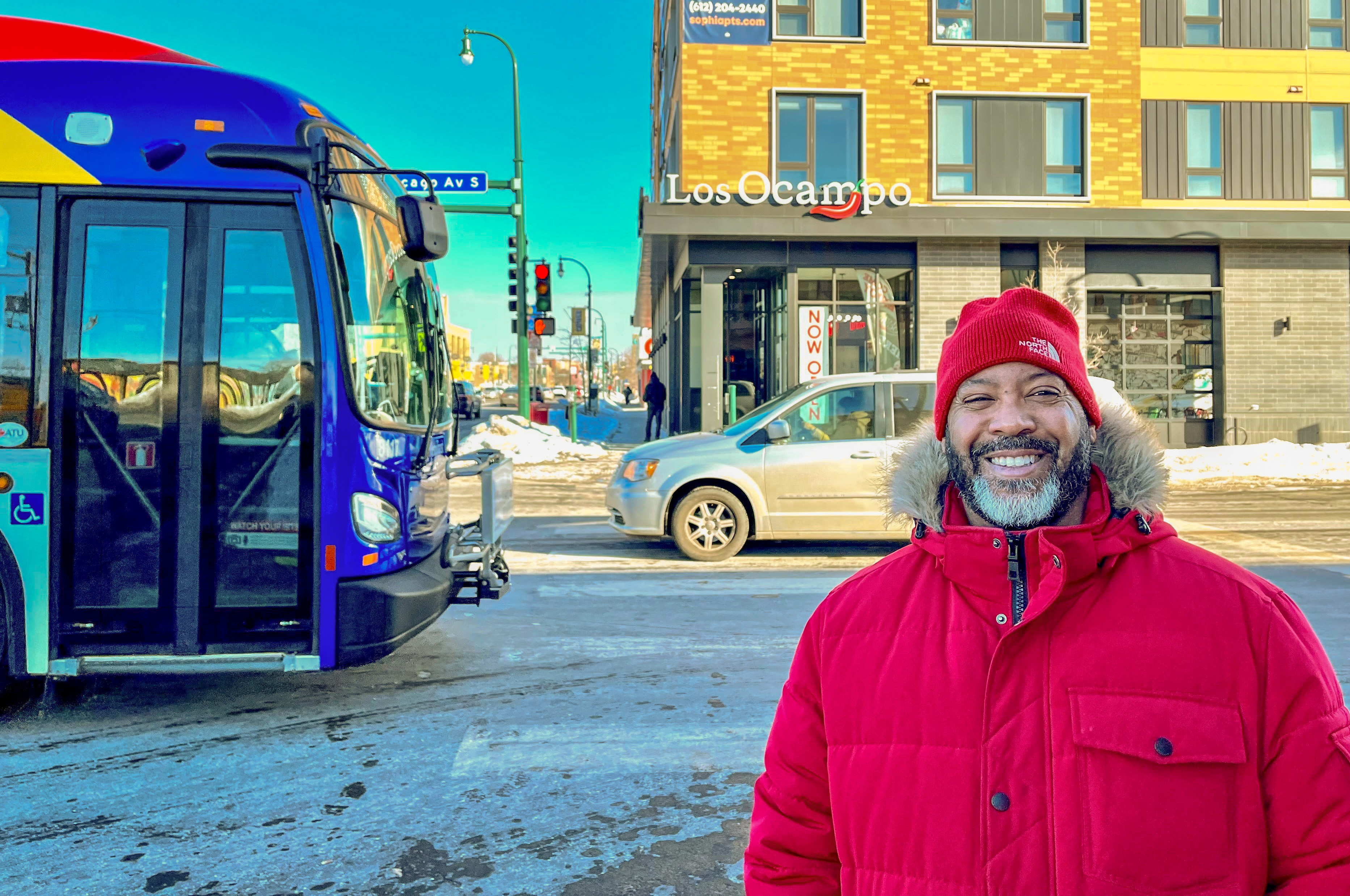
Development along transit corridors is recovering from its pandemic slump – welcome news for the people who live and work along transit as well as the climate.
“There’s a growing body of research showing that aligning housing and jobs with transit is among the most important things we can do to reduce climate emissions,’’ said Michael Krantz, acting program manager for Metro Transit’s Transit Oriented Development Office.
The climate benefits of concentrating development in the 3% of land along high-frequency transit were highlighted when staff from the TOD Office recently presented their annual Development Trends Along Transit report.
Households near high-frequency transit create less greenhouse gases emissions than the rest of the region and are well below the national average, according to data provided by EcoDataLab, a research consultancy.
Transportation is often the largest source of household emissions and residents near high-frequency transit typically drive less.
“This is why it’s so significant that we continue to see new development along high-frequency transit,” Krantz said. “These new residents will be close to employment, shopping and recreation, and they’ll have the option of taking transit, walking or biking.”
Development significantly increases in 2021
In 2021, $1.6 billion in development was permitted near high-frequency transit, representing 36% of regional development. That’s a significant increase from 2020, which saw development activity decline across the region.
Overall, $13.7 billion in development has been permitted near high frequency transit between 2009 and 2021. This includes 41% of the region’s multifamily development by permit value and about 45,000 units.
Another $9.7 billion in development is planned along high frequency transit, representing 67% of planned future development. This new development will add another 35,700 multifamily units, nearly doubling the number of residences built since 2009 with immediate access to high frequency transit.
The numbers didn’t surprise Will Schroeer, executive director of East Metro Strong.
“Cars get more expensive every year. People want choices,” he said. “So, when developers decide where to invest, they’re choosing to build near quality transit.”
‘Transit is a huge benefit’
One recent example of transit-oriented development can be found at the corner of East Lake Street and Chicago Avenue in south Minneapolis, where the SoPHI Apartments opened in 2020.
About half of the 48-unit building’s tenants are out-of-town medical professionals with short-term rentals who like SoPHI’s proximity to the METRO Blue Line and the newly opened METRO D Line.
Many are traveling nurses who take the D Line to and from nearby Abbott Northwestern and Children’s Minnesota hospitals or use the Blue Line to get to and from the airport.
"A lot of the tenants are here from big cities and don’t have cars, so transit is a huge benefit for them," property manager Brett Stewart said.
One of those tenants is LaPrice Ali, who grew up next to the "L” as Chicago’s elevated railway is known. After Ali’s car broke down, he sought a central location where he could easily access transit. Since moving into SoPHI, he’s used transit to get downtown, travel to the gym, visit the Mall of America and reach the airport.
"I am thinking of not even getting another vehicle,” he said. “I could save my money instead of buying a car. It’s working out for me."